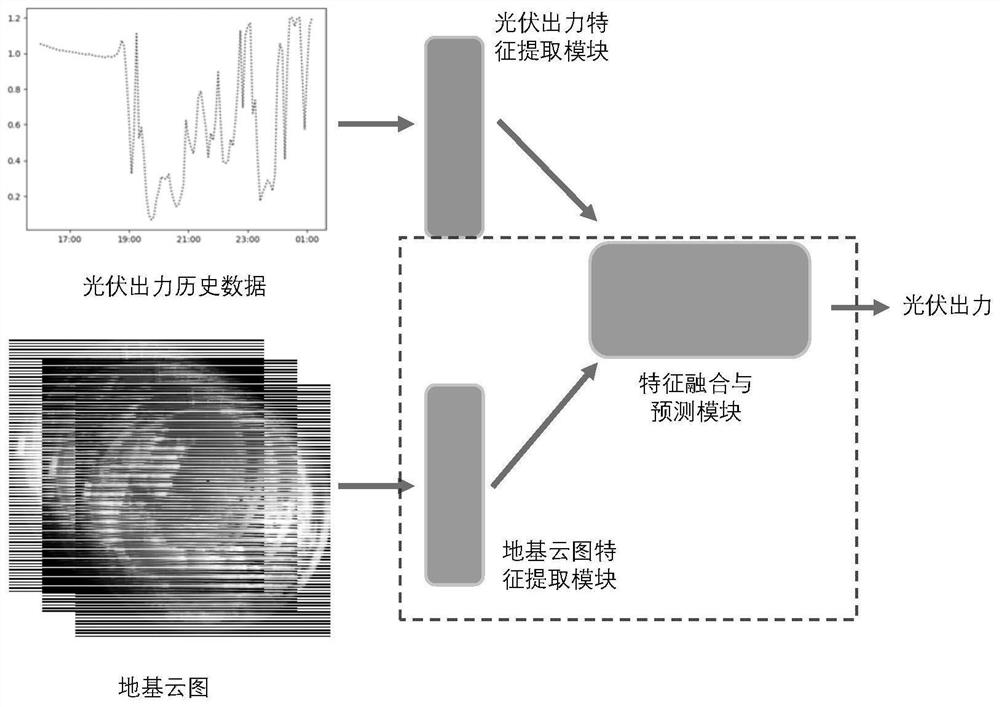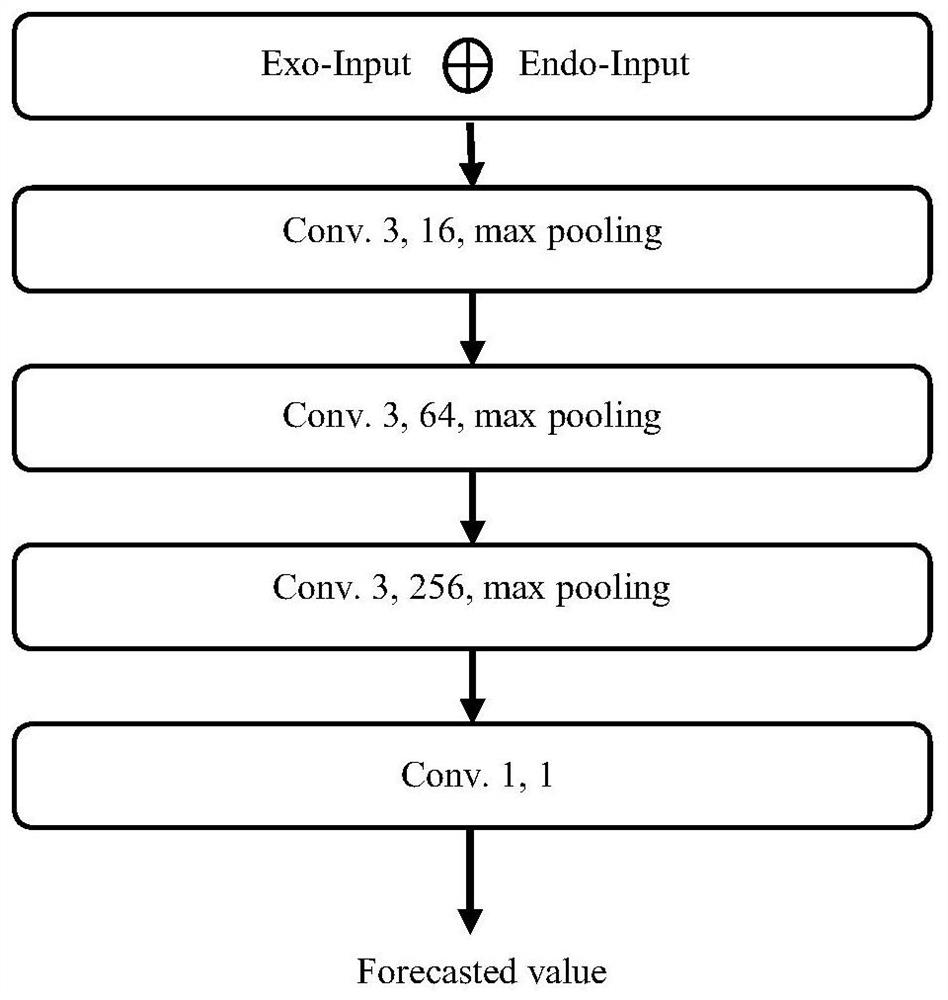Photovoltaic output ultra-short-term prediction method and system based on multi-source heterogeneous data
A multi-source heterogeneous data and ultra-short-term prediction technology, applied in the field of electronic information, can solve the problems of complex image feature extraction algorithm design, low precision, and difficulty in applying natural scenes, so as to reduce or eliminate adverse effects and improve utilization rate , to avoid the effect of light abandonment phenomenon
- Summary
- Abstract
- Description
- Claims
- Application Information
AI Technical Summary
Problems solved by technology
Method used
Image
Examples
no. 1 example
[0051] This embodiment provides a method for ultra-short-term prediction of photovoltaic output based on multi-source heterogeneous data. The method can be implemented by electronic equipment, and the electronic equipment can be a terminal or a server. The execution process of the ultra-short-term prediction method of photovoltaic output based on multi-source heterogeneous data is as follows: figure 1 shown, including the following steps:
[0052] S101. Obtain a time series of ground-based cloud images and historical photovoltaic output data, and extract cloud image features from the time series through a deep neural network; obtain historical data features based on the historical photovoltaic output data;
[0053] It should be noted that due to its good generalization and convenience in feature extraction, deep neural network (DNN) occupies a dominant position in computer vision tasks such as image classification and target detection. In this embodiment, by introducing a dee...
no. 2 example
[0072] This embodiment provides a photovoltaic output ultra-short-term forecasting system based on multi-source heterogeneous data. The composition of the photovoltaic output ultra-short-term forecast system based on multi-source heterogeneous data is as follows figure 2 As shown, the following modules are included:
[0073] Ground-based cloud image feature extraction module, which takes the ground-based cloud image as input and is used to extract cloud image features from the time series composed of ground-based cloud images through a deep neural network;
[0074] A historical photovoltaic output feature extraction module, which takes historical photovoltaic output data as input and is used to obtain historical data features based on historical photovoltaic output data;
[0075] The feature fusion and photovoltaic output prediction module is used to splicing the cloud image features extracted by the ground-based cloud image feature extraction module and the historical data f...
no. 3 example
[0088] This embodiment provides an electronic device, which includes a processor and a memory; at least one instruction is stored in the memory, and the instruction is loaded and executed by the processor, so as to implement the method of the first embodiment.
[0089] The electronic device may have relatively large differences due to different configurations or performances, and may include one or more processors (central processing units, CPU) and one or more memories, wherein at least one instruction is stored in the memory, so The above instruction is loaded by the processor and executes the above method.
PUM
 Login to View More
Login to View More Abstract
Description
Claims
Application Information
 Login to View More
Login to View More - R&D
- Intellectual Property
- Life Sciences
- Materials
- Tech Scout
- Unparalleled Data Quality
- Higher Quality Content
- 60% Fewer Hallucinations
Browse by: Latest US Patents, China's latest patents, Technical Efficacy Thesaurus, Application Domain, Technology Topic, Popular Technical Reports.
© 2025 PatSnap. All rights reserved.Legal|Privacy policy|Modern Slavery Act Transparency Statement|Sitemap|About US| Contact US: help@patsnap.com



